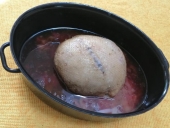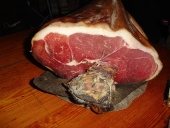









QuickBooks set up and Bookkeeping for Small Businesses and Farms - jocelyncampbell.com
 1
1





 4
4










 2
2









Dave's SKIP BB's / Welcome to Permies! / Permaculture Resources / Dave's Boot Adventures & Longview Projects














 1
1




Visit Redhawk's soil series: https://permies.com/wiki/redhawk-soil
How permies.com works: https://permies.com/wiki/34193/permies-works-links-threads
 4
4






 7
7




Actually, "pink salt" seems to be an American name for Curing Salt #1 which contains ~3% nitrite so it isn't anything like the pink Himalayan salt. In places they add a pink dye so that people don't accidentally confuse it with table salt as that could actually be dangerous. The curing salt only makes up a small proportion of the total salt used in the brine the recipe soaks the meat in.Pink salt isn't very different to normal salt.
Visit Redhawk's soil series: https://permies.com/wiki/redhawk-soil
How permies.com works: https://permies.com/wiki/34193/permies-works-links-threads









Visit Redhawk's soil series: https://permies.com/wiki/redhawk-soil
How permies.com works: https://permies.com/wiki/34193/permies-works-links-threads
 3
3




Visit Redhawk's soil series: https://permies.com/wiki/redhawk-soil
How permies.com works: https://permies.com/wiki/34193/permies-works-links-threads
 4
4




![Filename: Corned-duck-ingred.jpg
Description: I was hoping for a one pot meal, but the veggies would be much better cooked separately. [Thumbnail for Corned-duck-ingred.jpg]](/t/1985/a/74091/thumb-Corned-duck-ingred.jpg)
Visit Redhawk's soil series: https://permies.com/wiki/redhawk-soil
How permies.com works: https://permies.com/wiki/34193/permies-works-links-threads




Irene Kightley wrote:We have Muscovy ducks.
...
 3
3




Visit Redhawk's soil series: https://permies.com/wiki/redhawk-soil
How permies.com works: https://permies.com/wiki/34193/permies-works-links-threads

|
30 seconds to difuse a loaf of bread ... here, use this tiny ad:
Freaky Cheap Heat - 2 hour movie - HD streaming
https://permies.com/wiki/238453/Freaky-Cheap-Heat-hour-movie
|








